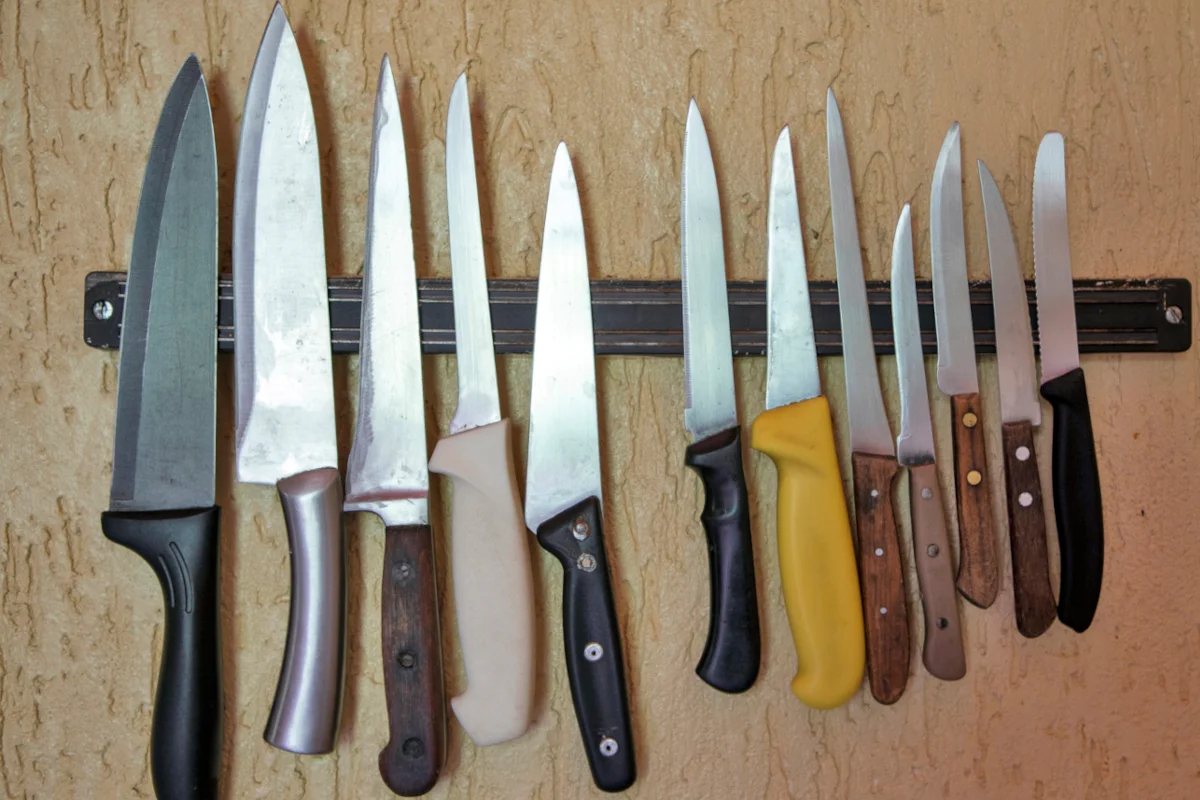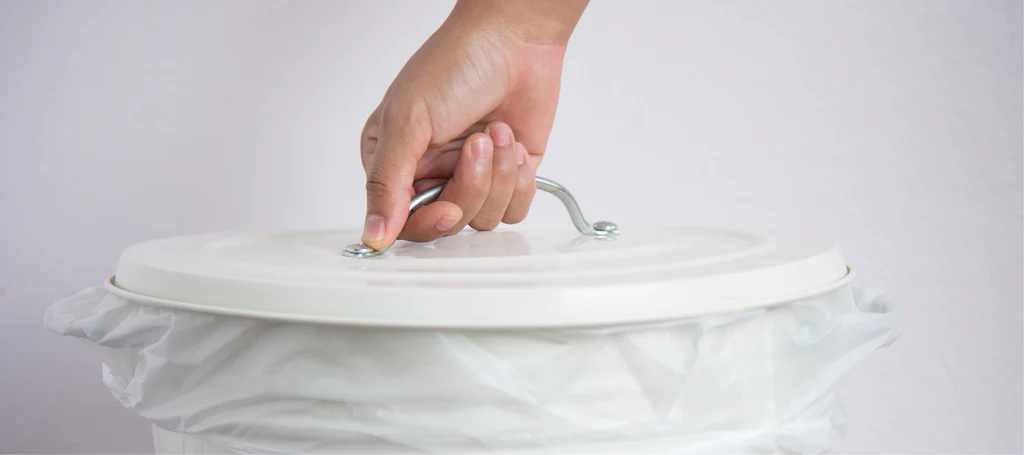How to Dispose of Kitchen Knife (UK): Safe Options!
As mundane as it may seem, knowing how to dispose of kitchen knives is an important matter that requires attention to safety and environmental responsibility. Whether it’s a dull blade that’s past its prime or a broken one that’s no longer safe to use, understanding the proper methods for disposing of kitchen knives in the UK is crucial for safeguarding both people and the planet. In this guide, we’ll explore the safest and most eco-friendly ways to dispose of kitchen knives, helping you navigate this often overlooked aspect of kitchen maintenance.
Now, let’s delve into the various options available for safely disposing of kitchen knives in the UK while ensuring that you know how to dispose of kitchen knife responsibly.
How To Dispose Of Kitchen Knife? Safe Knife Disposal Methods
Recycle
Recycling is often the most eco-friendly option for disposing of kitchen knives, especially if they are made entirely of metal. Many local waste disposal centers in the UK accept metal items for recycling, including kitchen knives. However, before you drop off your old knives, there are a few important steps to follow to ensure safety and efficiency in the recycling process.
- Blunting the Blade: Before you prepare your knife for recycling, it’s essential to blunt the blade to prevent any potential accidents during handling. You can use a sharpening stone or a grinding tool to dull the edge of the blade. This step is crucial to protect waste management workers and anyone else who may come into contact with the knife during the recycling process.
- Secure Packaging: Once the blade is properly blunted, the next step is to securely package the knife for transport to the recycling center. Wrapping the knife in several layers of thick cardboard or padding helps prevent injuries and ensures that the blade remains safely contained during transit. Be sure to use strong tape to secure the packaging to avoid any accidental exposure.
- Transportation: When transporting the packaged knife to the waste disposal center, exercise caution to prevent any mishaps. Place the wrapped knife in a sturdy container, such as a cardboard box or a plastic bin, to minimize the risk of damage or injury. Handle the package with care and avoid any rough handling that could compromise its integrity.
- Check Local Regulations: It’s important to check with your local waste disposal center or council to confirm their policies regarding the recycling of kitchen knives. Some centers may have specific guidelines or restrictions on the types of knives they accept, so be sure to inquire beforehand to avoid any complications.
By following these steps and responsibly recycling your old kitchen knives, you can contribute to the reduction of waste and promote sustainability in your community. Remember, safety should always be a top priority when handling sharp objects, so take the necessary precautions to ensure a smooth and hazard-free disposal process.

Donate (Optional)
Another option to consider when disposing of kitchen knives, especially if they are still in good condition and usable, is to donate them to charity shops or food banks. Donating knives not only gives them a second life but also helps individuals or families in need who may not have the means to purchase kitchen essentials. Here’s how you can go about donating your knives responsibly:
- Assess the Condition: Before donating your knives, assess their condition to ensure they are still usable. Check for any signs of damage or wear that may affect their functionality or safety. Knives with broken handles, bent blades, or significant rust may not be suitable for donation and should be disposed of properly instead.
- Contact Charity Shops or Food Banks: Reach out to local charity shops or food banks to inquire about their policies on accepting kitchen knives. Some organizations may have specific guidelines or restrictions regarding the types of knives they can accept, so it’s essential to confirm their requirements beforehand.
- Prepare for Donation: If the charity shop or food bank confirms that they can accept kitchen knives, prepare the knives for donation by cleaning them thoroughly and ensuring they are safely packaged. Similar to recycling, it’s advisable to blunt the blade and securely wrap the knives in cardboard or padding to prevent any accidents during handling.
- Drop-off or Arrange Pick-up: Depending on the charity shop or food bank’s policies, you may need to drop off the donated knives at their location or arrange for a pick-up service. Be sure to follow their instructions and schedule the donation at a convenient time.
- Consider Safety and Hygiene: When donating knives, consider the safety and hygiene of the recipients. Ensure that the knives are properly sanitized and packaged to minimize any risk of contamination. Additionally, provide any relevant information about the knives’ condition to the recipients to help them make informed decisions.
Bin Disposal (Last Resort)
While recycling and donating are preferable options for disposing of kitchen knives, there may be instances where bin disposal becomes necessary, especially for knives that cannot be recycled or donated due to safety concerns or damage. However, it’s important to emphasize that bin disposal should only be considered as a last resort when all other options have been exhausted. Here’s how you can safely package a knife for bin disposal:

- Blunt the Blade: Before packaging the knife for bin disposal, ensure that the blade is properly blunted to minimize the risk of injury during handling. Use a sharpening stone or grinding tool to dull the edge of the blade effectively.
- Secure Packaging: To safely package the knife for bin disposal, wrap it in several layers of sturdy cardboard or padding. The packaging should completely cover the blade and handle to prevent any accidental exposure. Use strong tape to secure the packaging firmly and ensure that it remains intact during transit and disposal.
- Labeling (Optional): Consider labeling the package to indicate that it contains a sharp object for the safety of waste management workers and others who may come into contact with the bin contents. You can use a permanent marker to write “Caution: Sharp Object” or a similar warning on the packaging.
- Dispose Responsibly: When disposing of the packaged knife in the bin, exercise caution to prevent any injuries. Place the package in the bin carefully, ensuring that it is positioned securely to avoid any potential accidents or damage to the packaging.
- Check Local Regulations: Be sure to familiarize yourself with local regulations regarding the disposal of sharp objects in household waste bins. Some areas may have specific guidelines or restrictions on how to dispose of knives safely, so it’s essential to follow the applicable rules to avoid any penalties or hazards.
Are You Looking For How to Dispose of Soil?
Police Station Knife Amnesty Bins
In some areas, police stations may offer knife amnesty programs where members of the public can safely dispose of knives without facing legal repercussions. These initiatives aim to reduce the number of knives in circulation and prevent knife-related incidents in the community. If such a program is available in your area, it can provide a convenient and secure option for disposing of unwanted or potentially dangerous knives.
How it Works:
Participants in the knife amnesty program can deposit knives into designated bins located at police stations or other specified locations. These bins are typically secure and specifically designated for the collection of knives, ensuring that they are safely contained and cannot be accessed by unauthorized individuals.
Specific Requirements
Before participating in a knife amnesty program, it’s important to familiarize yourself with any specific requirements or guidelines set forth by the local authorities. These may include:
- Types of Knives Accepted: The program may have restrictions on the types of knives that can be deposited. Generally, all types of knives, including kitchen knives, pocket knives, and utility knives, may be accepted.
- Condition of Knives: Knives should be deposited in a safe and secure manner, preferably wrapped or packaged to prevent any accidental injuries during handling. Broken or damaged knives may also be accepted, but it’s advisable to check with the authorities beforehand.
- No Questions Asked: In most cases, knife amnesty programs operate on a “no questions asked” basis, meaning that individuals can deposit knives anonymously without fear of legal consequences. This encourages people to participate in the program without hesitation.
Why Safe Knife Disposal Matters?
safe knife disposal is essential for several reasons. Firstly, it helps prevent accidents and injuries, particularly in households with children or pets. Improperly discarded knives can pose serious risks, especially if they end up in bins where they can injure unsuspecting individuals handling trash.
Moreover, environmentally responsible disposal ensures that knives don’t end up in landfills where they can contribute to pollution and pose hazards to waste management workers. Kitchen knives are typically made of materials like stainless steel or carbon steel, which can take centuries to decompose, further exacerbating environmental issues.
By understanding safe disposal methods, individuals can play their part in promoting safety and sustainability in their communities.
Conclusion
In conclusion, knowing how to dispose of a knife safely and responsibly is essential for both personal safety and environmental protection. By exploring the various disposal options available, individuals can choose the method that best suits their needs and circumstances.
Whether it’s recycling metal knives, donating usable ones to charity, or utilizing police station knife amnesty bins where available, there are several avenues to ensure that knives are disposed of in a manner that minimizes risks and promotes sustainability.
We encourage readers to assess the condition of their knives and select the most appropriate disposal method accordingly. Remember to prioritize safety by blunting blades and securely packaging knives to prevent accidents during handling and transportation.
Together, by making informed decisions and taking proactive steps towards responsible and safe knife disposal, we can contribute to safer communities and a cleaner environment.






